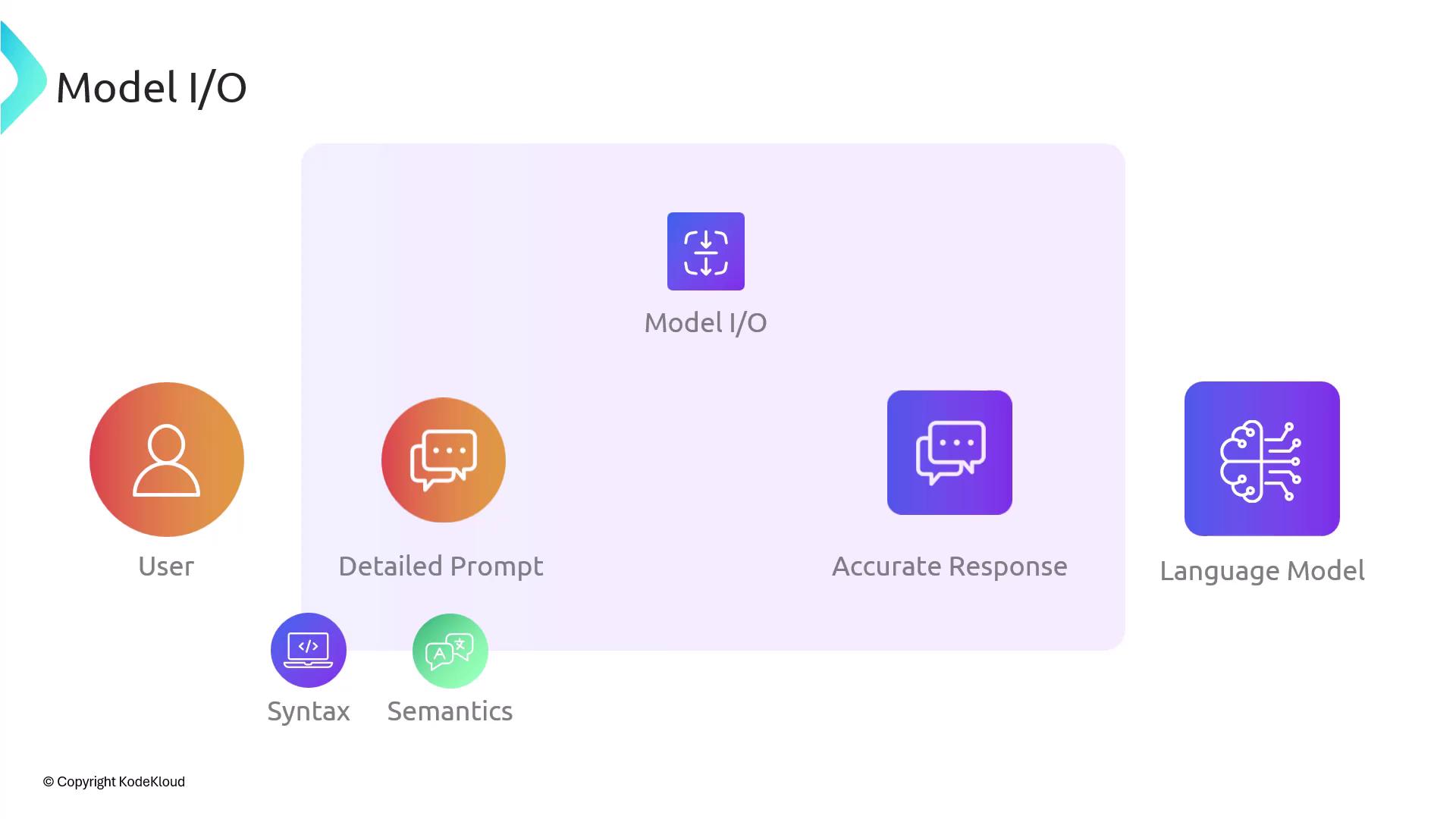LangChain
Key Components of LangChain
Model IO
Model I/O is the foundation of LangChain’s input/output workflow. It orchestrates how prompts are formatted before reaching the LLM and how raw text responses are parsed, validated, and transformed into structured data.
Why Model I/O Matters
Prompt engineering and response parsing are two sides of the same coin. A generic, one-line prompt often produces ambiguous or incomplete outputs. Conversely, a carefully crafted prompt written in the LLM’s preferred syntax and semantics leads to more accurate, relevant responses.
Note
High-quality prompts can significantly reduce hallucinations and improve the reliability of your language-model applications.

LangChain’s Model I/O utilities help you to:
- Structure Prompts
Prepare and format input text—using templates, variables, and conditional logic—so the LLM understands your intent. - Parse Responses
Extract, validate, and convert the LLM’s raw output into schemas or data structures your application can consume.
Core Model I/O Tasks
| Task | Purpose |
|---|---|
| Prompt Engineering | Design templates, inject context, and apply best practices to guide the LLM’s output. |
| Response Parsing | Use validators, regex, and type schemas to transform model text into reliable data formats. |
In the following sections, we’ll dive deeper into LangChain’s prompt-template classes, response-validator utilities, and built-in parsers that streamline end-to-end prompt engineering and data extraction workflows.
Watch Video
Watch video content